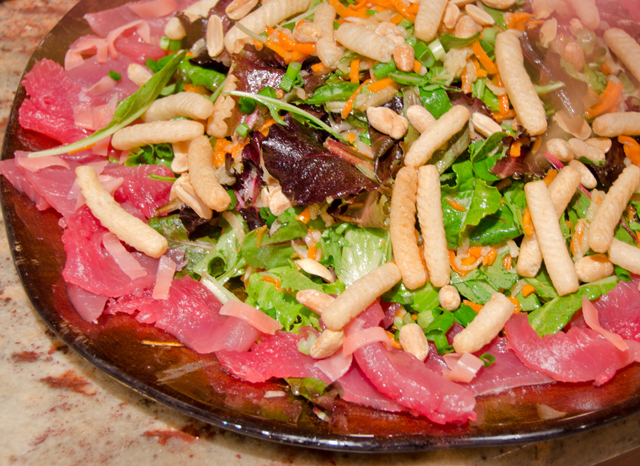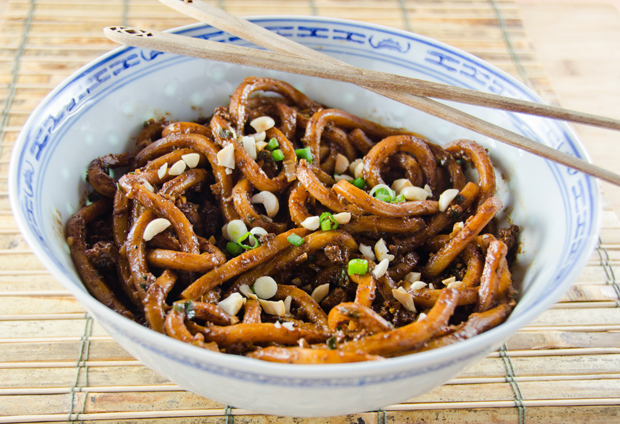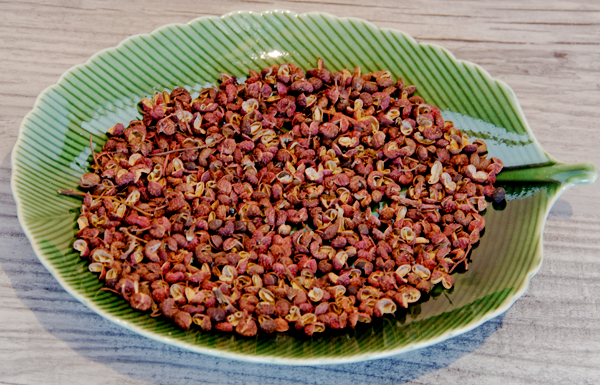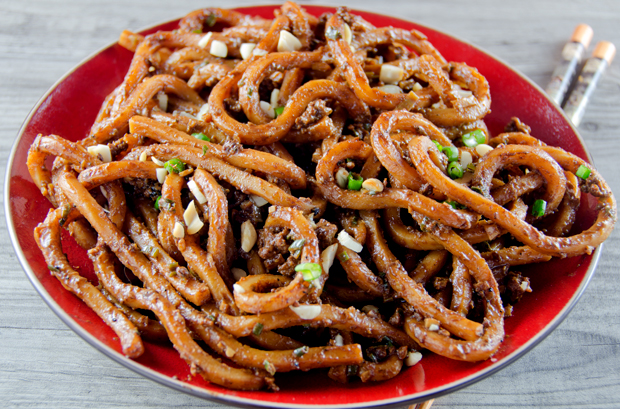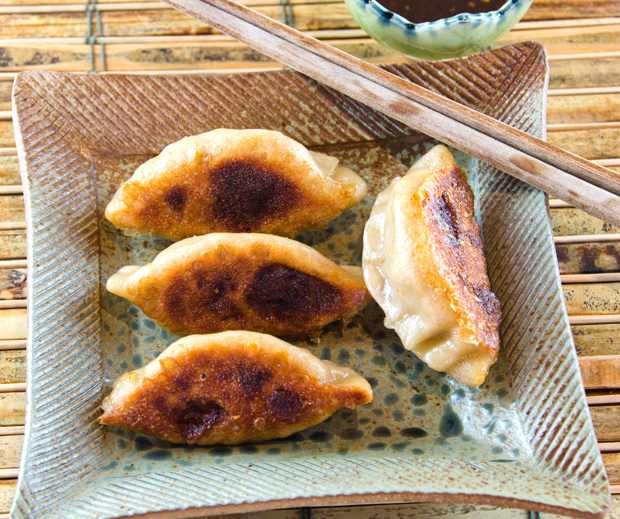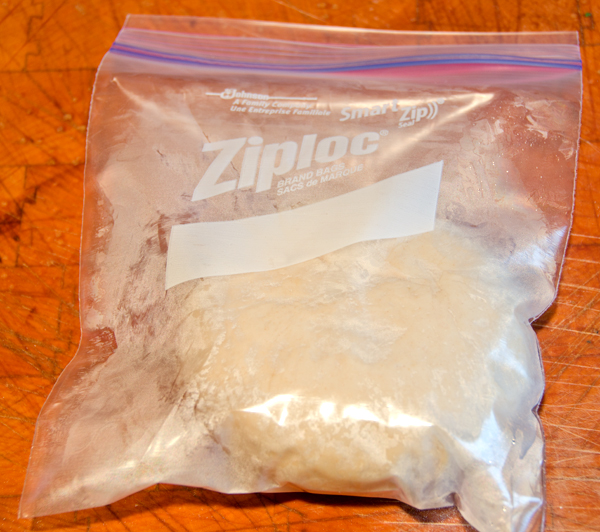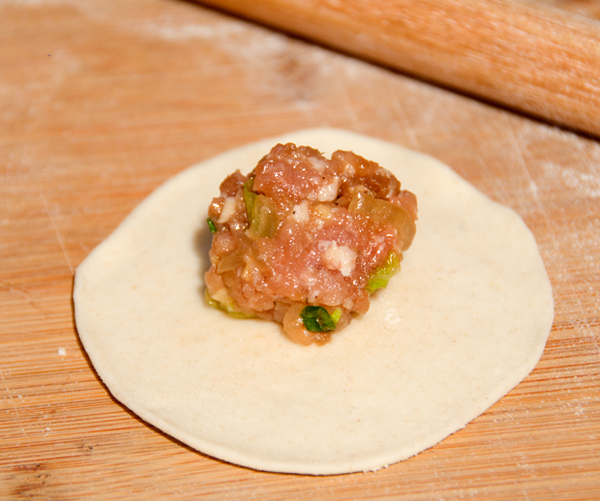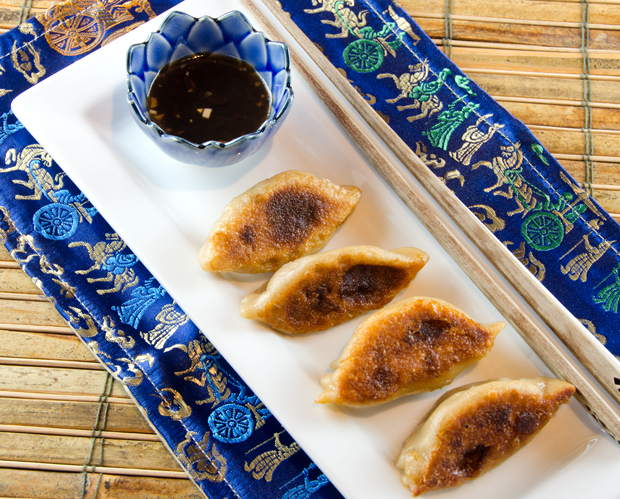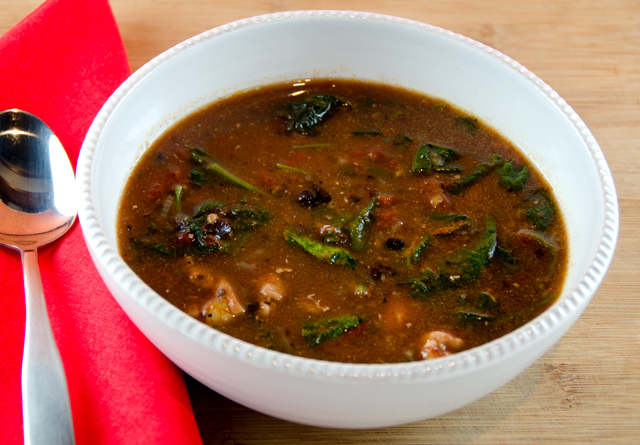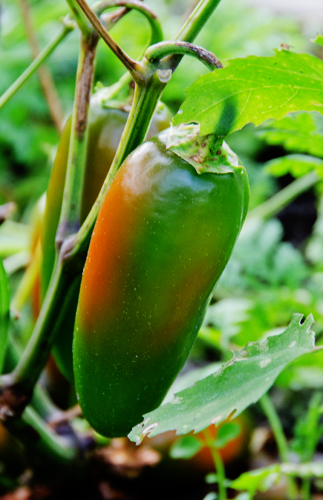Yu sheng is definitely not a traditional Chinese New Year dish though similar salad recipes have always existed in China. It is a contemporary dish unique to the Chinese communities of both Singapore and Malaysia. Though debated by some, the most popular and generally accepted story of the salad’s origins came from the 1960’s at the upscale Cathay Hotel in Singapore. Four chefs, referred to as the “heavenly kings” were brought together years earlier by a Hong Kong master chef with the intention of introducing Cantonese cuisine to the world. At the passing of the master chef, the heavenly four went their separate ways, each commanding his own restaurant. The chefs still got together on a regular basis to exchange ideas and create new dishes, and yu sheng was the most memorable of these creations.
In English, yu sheng literally means “raw fish” but it is a homophone for another Chinese word that means abundance. Yu sheng is traditionally served on the seventh day of the new year celebration, when man was created, also referred to as “everyone’s birthday”. It is said that eating yu sheng will bring diners good fortune and prosperity in the new year. The salad should have at least seven ingredients. Each ingredients has it’s own symbolism.
The ingredients we chose were
lettuce: symbolizing harmony and wealth
carrots: eminence
daikon radish: success
pickled ginger: good luck
raw fish: abundance
peanuts: longevity
shrimp chips: resembling gold bars and the wealth they bring.
Fish choices for yu sheng on the many menus and recipes I consulted included salmon, mackerel and abalone but our fish of choice has always been pristine sushi grade tuna. Other ingredients that might be found in yu sheng include dyed sweet potato, papaya, jellyfish, pomelo and candied fruit. When the salad is tossed the diners call out “lo hei” which means to mix it up but it also sounds like a word that means to prosper more and more. The higher the toss, the better the luck in the coming year.
Yu Sheng
Serves 2-4
Ingredients
Salad
- 5-6 cups of mesclun lettuce
- 1/4 lb sushi grade tuna, sliced thinly
- 2 carrots, shredded
- 1 3″ section of daikon radish, shredded, squeezed to remove excess liquid
- 1/4c red pickled ginger cut into thin strips
- 1/2c roasted, unsalted peanuts, chopped coarsely
- Shrimp chips
Directions
- Place lettuce in a serving bowl and top with shredded carrot and daikon
- Top with pickled ginger, tuna and peanuts. Place shrimp chips around the outer rim of the plate.
Dressing
- Juice of two limes (about 1/4c)
- 1/3c plum sauce, chopped if too chunky
- 2T Toasted sesame oil
- 3T Canola oil
- 1/4t five-spice powder
Directions
- Whisk salad dressing ingredients together in a small bowl. Taste and correct seasoning as needed.
- Pour dressing over salad and toss high for a happy and abundant new year. Lo hei!
